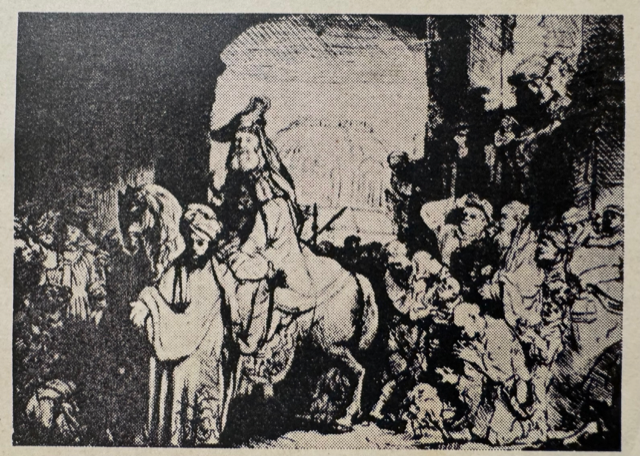Maspero Freres was a Cairo-based subsidiary of British American Tobacco Company with a cigarette factory in Tel Aviv. In 1940, it included Jewish History trading cards in cigarette packages sold in Palestine. The series began with a card depicting Ur Kasdim, the birthplace of Abraham, and ended with a photograph of David Ben-Gurion, Chaim Weizmann and Moshe Shertok at the 20th Zionist Congress in 1935.
This card (in honour of Purim which starts at sundown on March 23) depicts the Triumph of Mordecai, an etching by Dutch artist Rembrandt. The scene depicted is Haman leading Mordecai on horseback through Shushan proclaiming “Thus shall it be done to the man whom the king delighteth to honour.”
Rembrandt created this work around 1641 during the Netherlands’ 80-year fight for independence from Spain, a time when the Dutch identified with the children of Israel. The Purim story, with its clear political overtones, was a popular theme in art where Mordecai and the Jews represented the Dutch and Haman was the Spanish tyrant.
Rembrandt wasn’t Jewish, but had such love and empathy for the Jewish people that Israel’s national poet, Chaim Nahman Bialik, wrote that he should be considered an honorary Jew.
Purim celebrates Jewish survival, continuity and unity. Those lessons are equally relevant today, as Treasure Trove hopes you have a happy one.
